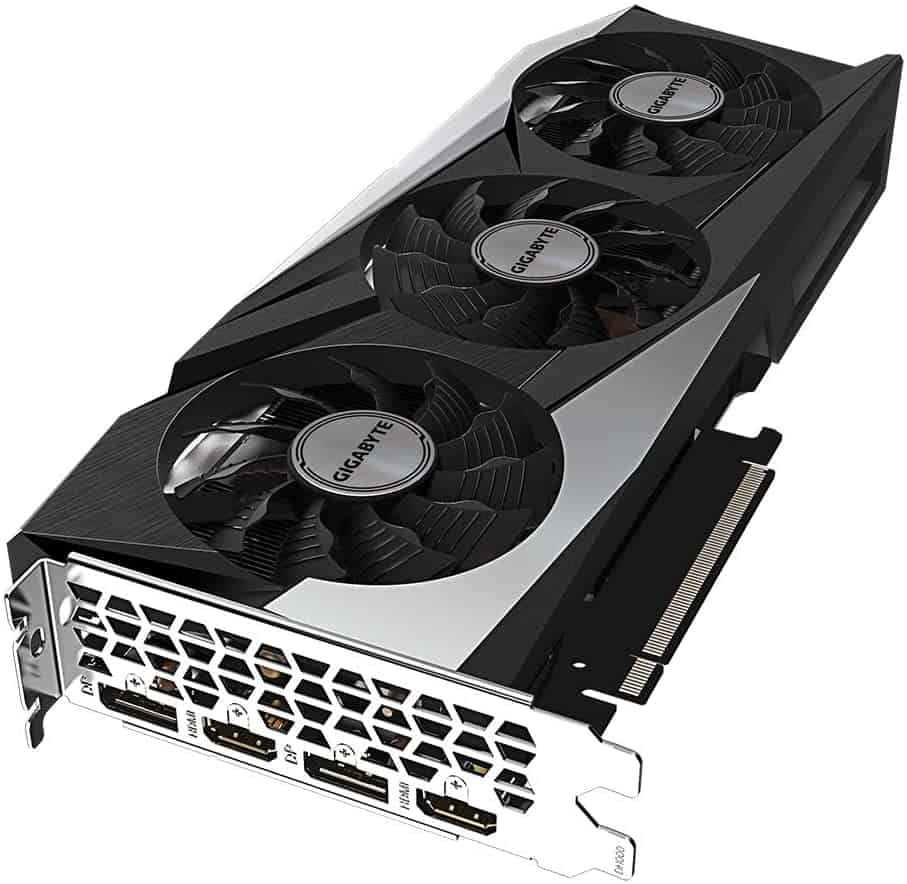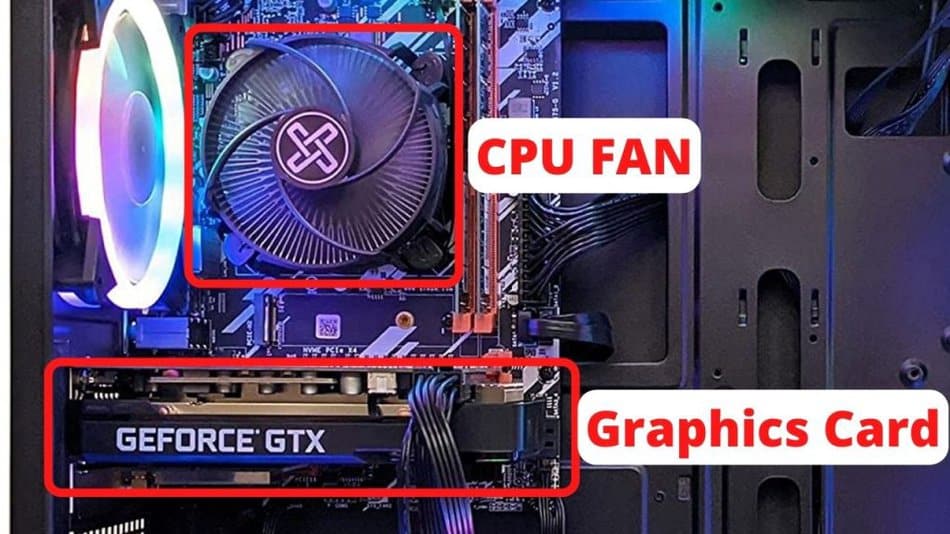The graphics card is one of the most critical components of a modern computer. The graphics card varies significantly, from simple GPUs used to display everyday tasks such as word processing, email, and web browsing, to massive, power-hungry graphics cards with multiple cores that produce 4k 120fps gameplay in the most advanced graphics-intensive games.
There are many different graphics cards, each suited for a specific task. The most common graphics cards are gaming graphics cards, workstation graphics cards, and video editing cards. Depending on your needs, one of these graphics cards may be more suitable than the others.
But all this talk about changing graphics cards raises an interesting question. Where is the graphics card in a PC? How on earth are you supposed to find the GPU in the cauldron of components in the PC case? A PC is, after all, packed with technical wizardry and magical elements that confuse me at the best of times.
Not quite sure myself, I decided to open my partner’s PC case – I’m not dumb enough to open my own PC. I might break it! – And took a peek inside. This is what I found.
Where is the graphics card in a PC? A graphics card can be found in two places in a PC. The first is the onboard graphics or system-on-a-chip graphics (SOC). These “graphics cards” are located on the CPU. The second type of graphics card, the actual big cards, are located on a PCIe connector next to the CPU fan assembly.
I know that sounds a little technical. But don’t worry. I’ll explain everything in the following sections. I will talk about:
- Different types of graphics cards
- The position of onboard CPUs
- The placement of traditional PCIe Graphics cards
Okay, now you know what I’ll be talking about, and we will start with the first section, where I’ll explain the different types of graphics cards.
Different graphics card types
There are two main graphics card types: the traditional PCIe cards and onboard graphics cards. Newer computers have two kinds of graphics cards, while older ones have only one or the other.
In this section, I’ll take a quick look at both, so you know what I am talking about in later sections.
Onboard graphics

Onboard graphics cards are integrated into the CPU. It is designed to be efficient, low-power, and provide reasonable performance for regular users who do not care much about gaming.
The main onboard graphics used in most computers today are system-on-chip (SOC) graphics. Onboard graphics are found in many modern laptops, consoles, and CPUs and are integrated into the CPU or chipset to save space, power, and money. The main drawback of these chipsets is that they often have problems with newer game titles, especially at high resolutions like 1440p or 4K (3840×2160).
Another difference to the onboard graphics is that the onboard graphics and the CPU share the same system RAM. This means that the CPU and the GPU compete for RAM bandwidth and memory. This competition slows down the CPU and the graphics card, making the entire system slower overall.
Traditional PCIe graphics cards
Traditional PCIe graphics cards are typically large, slab-like components. They often have multiple fans on one side. At the bottom is a connector that slides into a PCIe slot on your motherboard.
The other end of the GPU points outward to the back of your PC. There are holes there for numerous display connectors like HDMI and DisplayPort cables.
To better understand the size, appearance, and shape of a graphics card, take a look at the image below.

These cards plug into a standard PCIe slot in your computer case. Most cases only have one or two PCIe slots to plug your card into! These slots are located on your motherboard.
We will talk more about this when I show you where the card is located in your computer.
These cards tend to be much more powerful than their onboard counterparts, consuming more power and generating more heat.
This massive heat generation is why these powerful graphics cards come in large slab configurations: They need the extra space to provide adequate cooling.
Most modern graphics cards have large heatsinks attached to the GPU core. Multiple fans attached to the GPU also push large amounts of air over the graphics core and heatsink to remove the excess heat. The size of graphics cards largely depends on the amount of heat that needs to be dissipated. The more powerful the graphics card, the more air, and thus larger or more fans are needed for cooling.
Also, unlike onboard graphics cards integrated into the CPU, a graphics card has its own pool of high-speed RAM, called GDDR RAM or Graphics Double Data Rate RAM. This separate RAM pool further increases the graphics card’s performance since it no longer has to share the RAM’s bandwidth or memory volume with the CPU.
So, now you know that there are two types of graphics cards.
Onboard graphics cards are integrated into the CPU, and PCIe graphics cards are large, plate-shaped components connected to the motherboard via a PCIe slot.
In the next section, I will detail where onboard graphics cards or graphics French fries are located.
Is the graphics card located in the CPU? The location of the onboard graphics (System on a Chip Graphics)
This section explains precisely where an onboard graphics card or graphics chip is located. I have included some pictures to help.
If your PC has an onboard graphics card, the graphics processing unit (GPU) is generally integrated into the CPU.
Most Intel processors have an integrated graphics card. If the name of an Intel processor has an “F” at the end, such as the i5 6400F, it does not have an integrated graphics card.
However, only some AMD CPUs are equipped with an integrated graphics card. CPUs with onboard graphics from AMD are identified by the letter “G” at the end of the model name.
So, where can you find onboard graphics cards? As the name suggests, onboard graphics cards are located onboard the CPU.
So if you are looking for an onboard graphics card in your PC, all you have to do is find the CPU, and you have found your graphics card because it’s integrated right into the CPU.

When you open your PC case, you should see a large fan sitting on on next to a metal block. This is the fan unit or CPU cooler.
If you were to remove this, and I suggest you do not unless you have a really good idea of what you are doing, you will see the CPU smeared with a load of thermal paste on top.

The CPU looks like a small metal block. Inside this metal block is your onboard graphics card. It cannot be upgraded unless you replace the entire CPU.
However, you can use a conventional PCIe graphics card instead of your onboard graphics card.
In this section, you learned that onboard graphics cards are located on the CPU, which is located under the CPU cooler or the CPU fan assembly. The GPU can be accessed by removing the cooler. However, the GPU can only be upgraded if you replace the entire CPU.
In the next section, I will look at where you can find traditional PCIe graphics cards.
The location of traditional PCIe graphics cards
As you already know, traditional graphics cards are large, board-shaped components that get very hot and need to be plugged directly into a PCIe slot on the motherboard.
The fact that these cards are so large, slab-shaped, and contain a lot of fans should make them relatively easy to find. And that is the case.
When you open your PC back up, look inside and locate your CPU’s cooler. It should be located about halfway down the PC motherboard.
For reference, look at the picture below.

Once you find it, look down from the CPU. If you do not have a video card, you should see 2-3 horizontal lines that look like something long and slender (no jokes, please. I am trying to be serious here) could fit in there.
These are the PCI Express slots.

If one of these slots is filled with a large component with multiple fans, it is most likely your graphics card.
Take a look at the picture that shows a graphics card plugged into a motherboard. Honestly, it’s hard to miss if you have a large gaming GPU plugged in.

In some cases, but not many these days, you might even have multiple graphics cards in your PC. You can use multiple Nivida GPUs simultaneously using a process called SLI. These would run simultaneously to give your PC a graphics boost. And you can use multiple AMD GPUs at the same time by using Crossfire.
These two technologies are different and follow different protocols. You can not just take any two GPUs, connect them, and expect them to work together. It’s not that simple – it’s never been that way, has it? SLI and Crossfire have their own hardware requirements, and each manufacturer has its own software requirements. In most cases, however, you’ll need to visit the manufacturer’s website and download the latest software driver for your GPU.
If you use multiple graphics cards, they are usually located next to each other and are easy to find.
This section taught that PCIe graphics cards are located next to the CPU fan and connect directly to the motherboard via a PCI Express slot.
Summary
Wow, we learned a lot in this article! I know my poor old brain can’t remember everything. To help myself and you out, I thought I’d include a handy little summary of the article’s main points here.
In this article, I went over the following:
- There are two different graphics card types: onboard graphics cards and PCIe graphics cards.
- Onboard graphics cards are built directly into the CPU.
- PCIe graphics cards are large, plate-like components house large heatsinks and many fans.
- Onboard graphics cards are located in the CPU under the CPU cooler.
- PCIe graphics cards are found in a PCIe slot on your motherboard near the CPU cooler.

